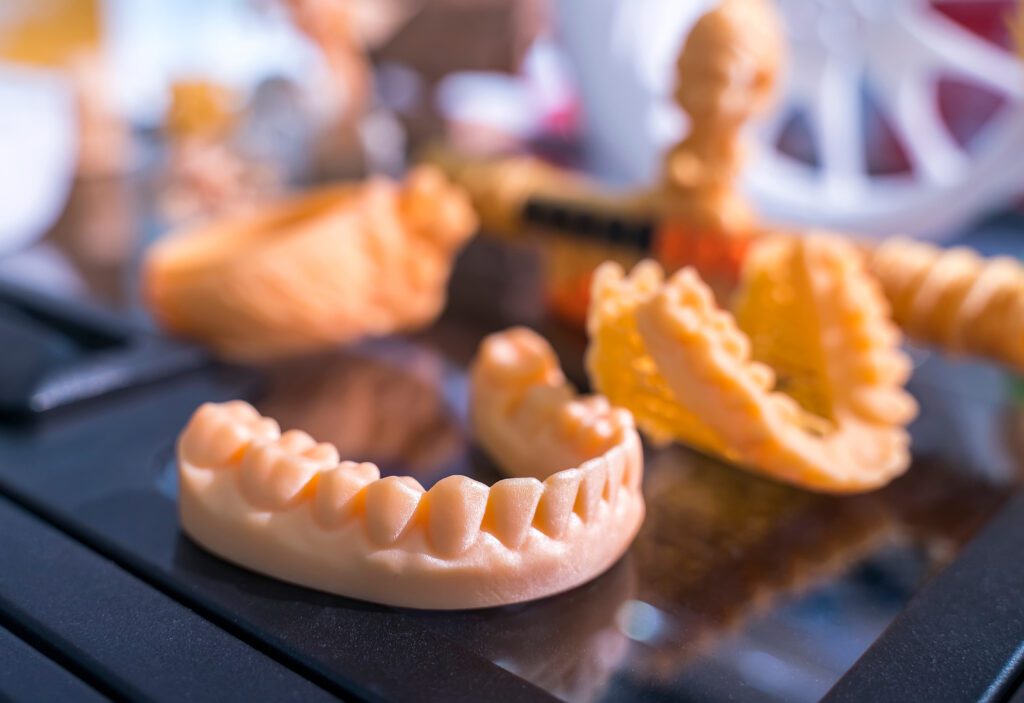3D Printing at Springfield Family Dental

3D printing technology has found extensive applications in dentistry, revolutionizing various aspects of dental care. Here are several ways in which 3D printers are utilized at Springfield Family Dental!
- Dental Models: 3D printing is used to create highly accurate physical models of a patient’s teeth and oral structures. These models help dentists in treatment planning, such as for orthodontic interventions or the creation of prosthetic devices.
- Prosthodontics: 3D printing is employed in the fabrication of dental crowns, bridges, and dentures. This technology allows for the production of precise and customized prosthetic devices tailored to the patient’s unique oral anatomy without the need for patient to be in the chair!
- Surgical Guides: Dentists use 3D printing to produce surgical guides for implant placement procedures. These guides are customized based on the patient’s anatomy, ensuring accurate and minimally invasive implant placement.
- Orthodontics: Orthodontic appliances, such as clear aligners, retainers, and braces, can be produced using 3D printing. This allows for a high level of customization, comfort, and effectiveness in orthodontic treatment.
- Temporary Restorations: Dentists can quickly create temporary crowns and bridges using 3D printing, providing patients with interim solutions while permanent restorations are being fabricated.
- Anatomical Models for Education: 3D printing enables the creation of realistic anatomical models for educational purposes.
- Digital Wax-Ups: In cosmetic dentistry, 3D printing is employed to create digital wax-ups, allowing dentists and patients to visualize the expected outcome of cosmetic procedures such as veneers or smile makeovers.
- Dental Splints and Night Guards: 3D printing is used to fabricate custom-fit dental splints and night guards, providing patients with comfortable and effective solutions for issues like bruxism (teeth grinding) or temporomandibular joint (TMJ) disorders.
- Digital Impressions: Traditional dental impressions involve uncomfortable molding materials. 3D scanners and printers can create digital impressions of a patient’s teeth, improving the overall experience for the patient and providing more accurate results.
- Materials Innovation: Ongoing research and development in 3D printing materials contribute to the creation of biocompatible and durable substances specifically designed for dental applications, enhancing the overall quality and longevity of dental restorations.
The integration of 3D printing in dentistry has streamlined various processes in our office. It has increased precision and improved patient outcomes, marking a significant advancement in recent dental care technology!

